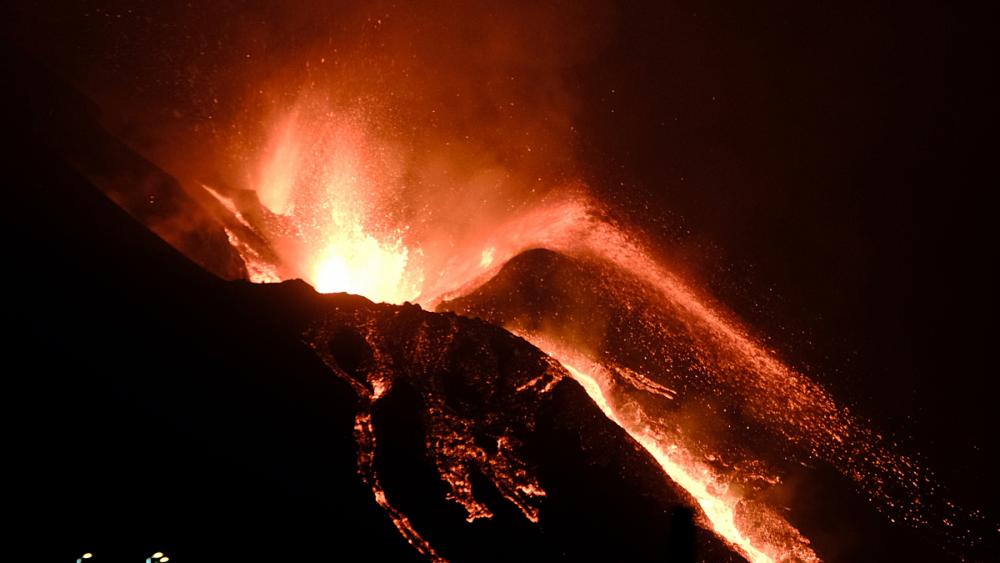NS The central cone of Cumbre Vega erupted on Saturday on the north face It generated a new flow of magma that flowed across the island with a temperature of more than 1,200 degrees Celsius towards the sea. The expectation is that it will create a new delta or join an already created phage.
The first peninsula of magma created by the volcano in activity since September 19 is already over 32 hectares, and because it is close to the plate boundary and with a tunnel through which the lava is believed to drain slowly, It threatens to drown in cold waters and causes hydromagnetic explosions that can break the still unstable slit At one time it was called Praia Nova.
a The nova fajã, according to the last magma flow, can appear 600 meters to the north, in the Los Celemines Viejos district. This Tuesday, the new lava river was about 300 meters from the sea and was flowing at a variable speed, between 10 and 15 meters per hour.
The volcano began its activity on September 19 and the magma flow reached the sea in the Tazacorte region, around midnight on Tuesday, September 28.
Activity remains intense, with more than 30,000 earthquakes recorded since September 10, most of them at great depth and 64 on this past Tuesday alone.
Three rivers of lava flow: the main ones have already reached the sea and the flow has subsided; the second, a little to the north, should soon reach the sea; The third, in the far south, destroyed some villages, but should not reach the sea.
Contact of lava, at more than a thousand degrees Celsius, with sea water, at about 20 degrees, caused the appearance of a cloud of acid gases, forcing them to confine the closest inhabitants, and immediately began to create a peninsula, lengthening the island.
The lava pile resulted in the so-called fajã, the name given to the flat peninsula created in the islands of Macaronesia (Azores, Madeira, Canary Islands and Cape Verde) by lava entering the sea.
There are two famous fajas in La Palma, the French and the Barlavento, but there are other terrains imposed on the sea by The eruption of the San Juan volcano in 1949Which has become a fertile field for the cultivation of banana trees.
The last known eruption before the current eruption was an eruption Teneguía volcano in 1971, which lasted 24 days and invaded from the sea the two square kilometer area known today as Echentive Beach.
growing peninsula It is already located more than 500 meters from the coast and at a depth of 30 meters. The first underwater video of this fajra was recently released, in which it is possible to see fish circling next to the magma that has already cooled on the sea floor.
NS The increase of land to the island is, oddly enough, the property of the Spanish state, which form part of the National Geological Heritage and are therefore subject to the Natural Heritage and Biodiversity Act. But the lands are now left, which, by law, are being transferred to the private domain, making it unclear to whom they will belong.
The total surface destroyed by magma on the island of Palma, in the Canary Islands, already exceeds 650 hectares, including 150 hectares of cultivated land, mostly banana trees.
The latest data on losses indicate At least 1,458 destroyed buildings. About 40 km of roads were razed to the ground and at least 3.1 kilometers partially damaged by lava, for a total Affected more than 6000 hectares from the volcano.
The volcano continues to expel large amounts of lava, and given the current seismic activity recorded in Cumbre Vieja, the alert is still in progress, and warnings of confinement or evacuation continue, but air quality remains “reasonably good”, considering an “active eruption process”. On the island, experts say.

“Music fanatic. Professional problem solver. Reader. Award-winning tv ninja.”



![[VÍDEO] Elton John’s final show in the UK has the crowd moving](https://www.tupi.fm/wp-content/uploads/2023/06/Elton-John-1-690x600.jpg)


More Stories
A South African YouTuber is bitten by a green mamba and dies after spending a month in a coma
A reptile expert dies after a snake bite
Maduro recalls his ambassador to Brazil in a move to disavow him and expand the crisis